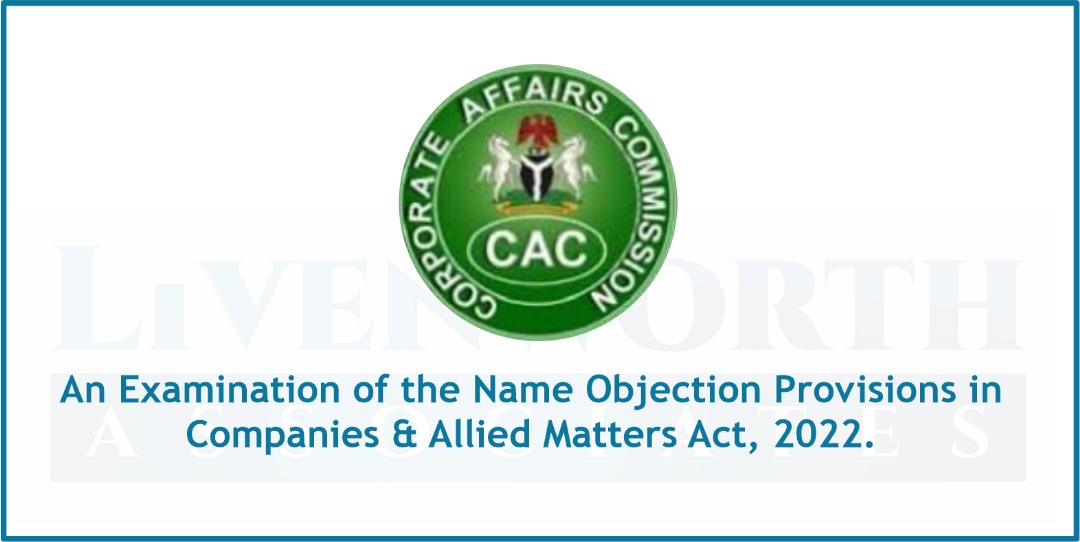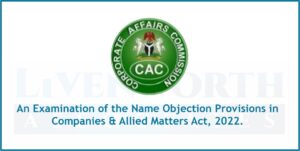It has been judicially recognised that, “a person who has registered a name or sign as his trademark has a proprietary right over the use of that name in that class in which it is registered. In order words, a registration is prima facie evidence of title to the particular trade mark and entitles the holder or proprietor of such mark to institute an action to protect its breach .
The incidence of company name objection implicates that any individual will be able to, either directly or through its attorneys, object to a company’s or business’s registered name with the Corporate Affairs Commission, if the name is:
- The same as a name associated with the brand name of the objector, and in which he has a registered trade mark or goodwill; or
- Similar enough in that such a name that its used in would likely mislead by suggesting a connection between the company and the name objector’s brand.
Section 5 of the Trade marks Act , further provides protection for a registered trade mark, to the effect that any use without the proprietor’s prior consent or authorisation will result to an infringement. It is important to note that the proprietor of a trade mark enjoys exclusive right to the use and ownership of such mark to the exclusion of any other individual, and where the trade mark is used without the consent or authorisation of the proprietor, it constitutes infringement, if registered, or tort of passing off, if not registered and it entitles the proprietor to damages and some other repressive measures.
The importance of trade mark registration cannot be over emphasised with regard to company name objection and preservation, in that the court in SANOFI’s case , held emphatically that a trade mark name takes precedence over a business name.
Two major provisions of the Companies & Allied Matters Act, 2022 (the Act), provide companies with the opportunity to object to the CAC’s incorporation and continued existence of business entities with name(s) which are identical or confusingly similar to an existing trademark. Section 30 of the Act, provides that:






